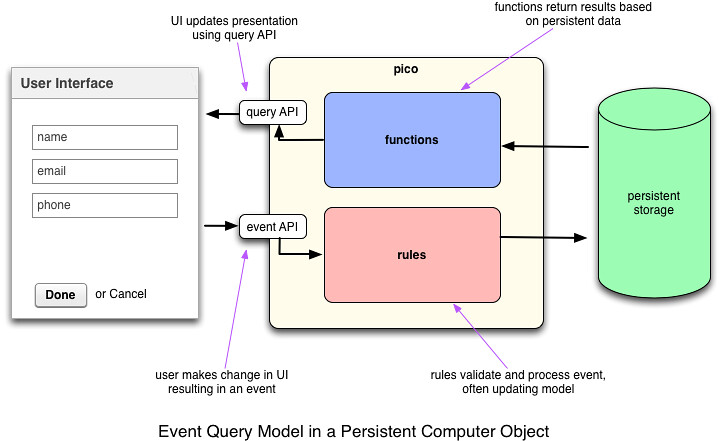...
The various pieces of the pico ecosystem and their relationship is shown in the following diagram (click for enlarged diagram).
For people who've read this blog, many Many of the titles in these boxes will may be familiar, but I suspect that the exact nature of how they relate to each other has been a mystery in many cases. Here are some brief descriptions of the primary components and some explanation of the relationships.
...
The following diagram shows the rules and functions in a pico presenting an event-query API to an application.
Wrangler (formerly CloudOS) provides functionality to installing rulesets in a pico and they can change overtime just as the programs installed on a computer change over time. As the installed rulesets change, so does the pico's API.
KRL
KRL is the language in which rulesets are programmed. Picos run KRL using the event evaluation cycle. Rules in KRL are "event-condition-action" rules because they tie together an event expression, a condition, and an action. Event expressions are how rules subscribe to specific events on the pico's event bus. KRL supports complex, declarative event expressions. KRL also supports persistent variables, which is how developers access the pico's state. KRL developers do not need a database to store attributes for the pico because of persistent variables.
...
Picos present a powerful model for how a decentralized, heterarchical, interoperable Internet of Things can be built. Picos are built run on open-source software and support a unbiased hosting model for deploymentengine that can be deployed on any hardware that supports Node JS. They have been used to build and deploy several production systems, including the Fuse connected-car system. They provide the means for giving people direct, unintermediated control of their personal data and the devices that are generating it.
...

